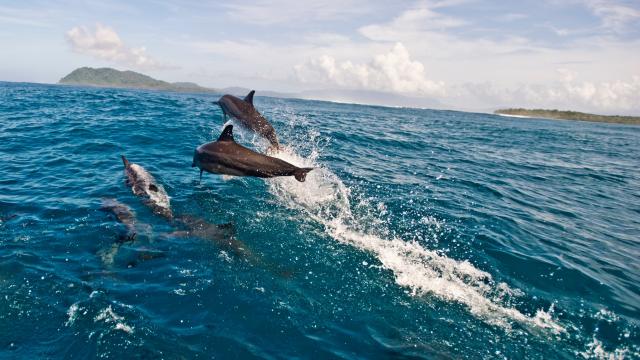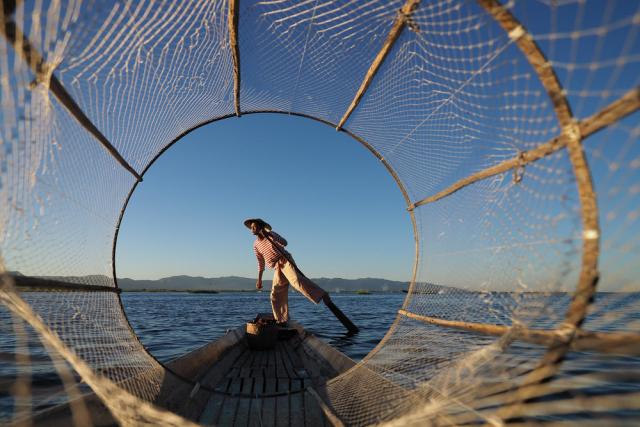
The significance of our ocean
Covering 70% of the Earth’s surface, the ocean plays a vital role in our planet’s ability to function. It sustains the lives of billions of people, regulates our climate, produces half the oxygen we breathe, and fuels the water cycle that produces rain and freshwater. In fact, the ocean’s capacity to buffer excess heat is so significant that without it, the planet would be 35°C hotter. The marine world is also home to an extraordinary and treasured array of species.
According to a recent report, the ocean has the power to provide one-fifth of the emissions reductions needed to meet the Paris Agreement and limit global temperature rise to 1.5°C. It is our greatest hope for the future of our shared home, yet it is showing signs of failing health.
With your support, we must now recognise the role a healthy and productive ocean can play in the race to tackle the climate and nature emergency.
Our Work
Though the challenge of addressing climate change seems immense, solutions are possible to secure a living ocean for a healthy global climate. We’re working with philanthropists to accelerate efforts to protect, restore and manage this critical life-support system for people and planet. To find out how you can support our oceans projects below, please email philanthropy@wwf.org.uk or call us at (+44) 01483 412424.
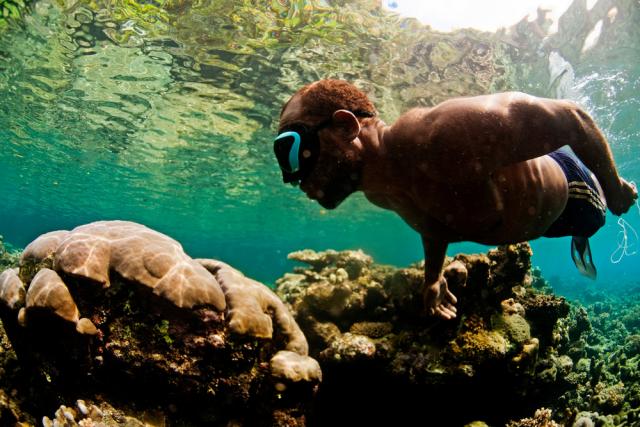
Coral Reef Rescue Initiative
Coral reefs are one of our ocean’s most important ecosystems. They provide a habitat for 25% of known marine wildlife and offer a vital source of income and nutrition for millions of people around the world. To date, an estimated 30-60% of the world’s corals have disappeared, and if we stay on our current trajectory, scientists predict that by 2050 only 10% of our planet’s coral reefs will survive. But there is hope. The Coral Reef Rescue Initiative is a global rescue strategy led by WWF and a group of world-leading scientists, NGOs and influential partners who are working in collaboration with governments and communities to safeguard reefs, food security and livelihoods against climate change.
Now in our second phase, we’ve identified 7 countries (Cuba, Tanzania, Madagascar, Indonesia, the Philippines, Solomon Islands and Fiji) where we’re working to conserve these reef complexes. With your help, we can protect reefs across these prioritised sites, and lead a worldwide coral reef revival to support the 120 million people that depend on reefs for their livelihoods and food security.
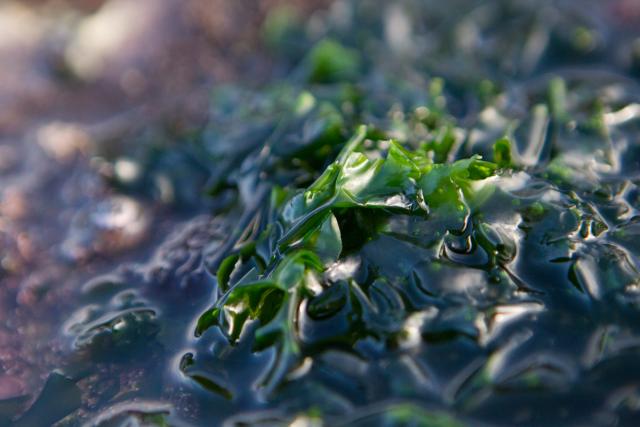
Blue Carbon: the new frontier
The importance of forests in the fight against climate change is well understood. However, the role of ‘blue forests’ such as mangroves, seagrasses, saltmarshes and seaweeds is yet to be fully recognised. These biodiverse habitats are natural carbon sinks, but they are being destroyed at an alarming rate. In response, we’ve established ‘Blue Forests Rising’, a global initiative to protect and restore 8.3 million hectares of blue forests by 2030, through unlocking investment finance at scale. We’ve identified pilot priority projects across Colombia, Mexico, Madagascar, UK, Indonesia, Vietnam, the Philippines, and Fiji that are well placed to provide strong models for investment.
We’re also working with others to help advance pioneering research initiatives – from seaweed and saltmarshes in the UK to Antarctic krill and mangroves in Asia. Each of these projects will help accelerate and deepen our scientific understanding of vital blue carbon ecosystems to unleash their potential. Your support will enable us to address critical knowledge gaps and shift the enabling environment, so we can pave the way for restoring ocean health, combating climate change, and achieving sustainable livelihoods for millions of people.
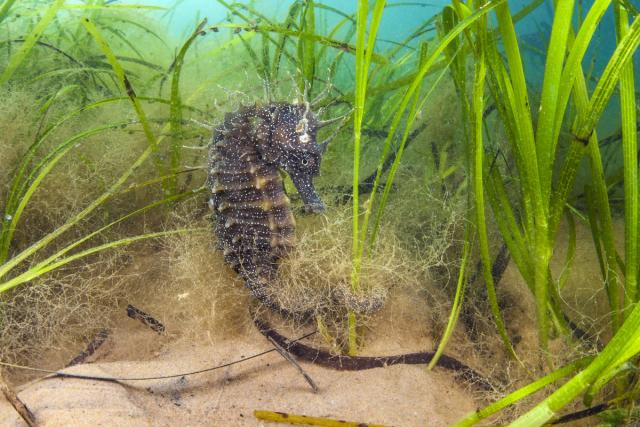
Seeds of Hope
Seagrasses are one of the world’s most productive ecosystems for marine life and the world’s biggest fisheries. They are also an incredible tool in the fight against climate change – storing carbon at rates over 30 times that of tropical rainforests. Yet each year, the equivalent of a football field of seagrass is lost worldwide every 30 minutes, with seagrass meadows in the UK having declined by a catastrophic 92%.
WWF has partnered with Project Seagrass and Swansea University on the ground-breaking Seeds of Hope programme, which is re-establishing 2,500 hectares of seagrass meadows in the UK’s coastal waters by 2030, making it the biggest ever seagrass restoration project in the UK. With your support, and working with local communities, we’ve already planted 2 hectares of new seagrass meadow at our pilot site in Dale, and the next phase to restore seagrass at further sites in North Wales, the Solent and the Firth of Forth by 2026 is underway. By incorporating strong awareness-raising and advocacy work, we aim to change public attitudes as to the value of our seas and build momentum to see ocean health restored.
Seagrass FAQs
Why is WWF involved in this project?
Seagrass is vital to our oceans for biodiversity, oxygen production, the absorption of carbon, cleaner waters, and coastal protection – yet we are losing it fast. WWF is helping to restore this habitat by undertaking large-scale seagrass planting at suitable sites across the UK, where seagrass previously existed and where threats to seagrass growth have been removed. We are also helping put in place procedures to involve coastal communities and stakeholders in project design and implementation and create a sustainable seagrass restoration model that governments and stakeholders can roll out across the UK. This project provides an important nature-based solution to both the climate and biodiversity crises, showing that it is possible to restore seagrass on a large scale – and with it the health of our oceans.
What are the critical factors required to reach the 2030 ambition?
Seagrass could play a vital role in the fight against climate change. However, we will need to speed up the seagrass restoration process if we are to plant our target of 2,500 hectares of seagrass in UK waters by 2030. Currently, we rely on a large number of volunteers to help collect and process the seeds by hand, which is time-consuming and labour-intensive. While volunteering is a crucial element of community engagement, our aim is to mechanise the seed collecting, processing, and planting by developing tools that will speed up the restoration process and bring down the cost ten-fold to around £20,000 per hectare. These technologies will be critical in unlocking future large-scale investment from government and industry and ensuring seagrass is a solution to carbon capture.
Other factors to realise our ambition include the removal of licensing barriers for seagrass restoration. The UK Government must also provide leadership by coordinating and facilitating efforts to restore critical coastal habitats, and by providing funding support to scale up those efforts.
How will impact be measured and what is the timeline?
We will measure the number of seeds and hectares planted; mature plants per hectare; local community members who are actively engaged; the reach of awareness events; and media pieces. We will also measure the change in government restoration policy through evidence of licensing streamlining and cost reduction; and in government agencies taking a more pro-active role in co-ordinating and enabling seagrass restoration (such as evidence of marine planning and available funding). Lastly, we will monitor water quality, biodiversity, and carbon capture over the long term to evaluate the benefits that seagrass restoration provides.
How important is carbon capture vs biodiversity for this project?
Seagrass is vital for biodiversity: 20% of the world’s 25 biggest fisheries are supported by seagrass nursery habitat and, in the UK, seagrass meadows support a wide range of species including two seahorse species, greater and lesser spotted dogfish, grey seal, octopus, and sand eel. Seagrass also has huge benefits for climate: seagrass can capture and store carbon at 35 times the rate of tropical rainforest and globally it accounts for 10-18% of total ocean carbon storage despite occupying less than 0.1% of ocean floor. It also helps climate adaptation, reducing coastal erosion and flooding by absorbing wave energy.
WWF presents seagrass restoration as a nature-based solution to both the urgent biodiversity and climate crisis, as well as a benefit to local coastal economies. In addition to supporting an increase in fish, crab, and shrimp numbers, which will benefit fisheries; seagrass also helps improve water quality by removing excess organic material and nitrogen, which will benefit water-based recreational activities and so improve local wellbeing and tourism livelihoods.
What’s the ongoing involvement of local communities and the project partners?
Success will depend on the programme reflecting the needs of local people, building public understanding of the importance and benefits of seagrass, and providing a platform to encourage debate and address any concerns about the future of the seagrass meadows. In Wales, we have held discussions with local boat users and fishermen to resolve issues, involving these important stakeholders in the design and implementation of the project. This work helps us engage communities and ocean users and build positive messages about this incredible plant and the important role of key coastal habitats like seagrass in providing the ecosystem services that humans rely on for their wellbeing. If environmental conditions remain favourable, then the seagrass we plant will look after itself and spread. We will set up local stakeholder groups to help manage the areas in which we restore seagrass, and Swansea University and Project Seagrass will continue to monitor the seagrass and its ecosystem service impacts over the long term in co-ordination with local partners.
How does this Seeds of Hope seagrass restoration project work alongside other nature-based solutions for carbon sequestration?
There is a growing public awareness of the enormous potential benefits to our health and economy of a thriving sea on people’s doorsteps. WWF’s Global Futures Report highlights that losing our coastal ecosystems could cost the UK economy at least £15bn each year by 2050 unless action is taken now. We are exploring how we can build on our seagrass restoration work and connect it with other coastal habitat restoration to help tackle the biodiversity and climate crises, whilst benefiting local livelihoods (such as fisheries). We are looking to collaborate with NGOs working on bivalve restoration – including oysters and mussels – and saltmarsh restoration to see if we can integrate the restoration of different coastal habitats. The project partners are members of the Environment Agency’s Restoring Meadows, Marshes and Reefs (REMEMARE) stakeholder group that has set targets for the restoration of critical coastal habitats in England and is building collaboration to enable targets to be met effectively.
How does this programme sit within the wider WWF marine work? Does it pave the way for other work in the UK or elsewhere?
Seagrass restoration helps the WWF-UK marine team deliver our Ocean Recovery strategy by restoring our coastal ecosystems and working with coastal communities, and also by supporting our work to reduce carbon emissions. As the project partners will need to collaborate with other agencies to meet the ambitious 2030 target, the model we are developing for seagrass restoration will be shared with relevant government agencies and NGOs for use across the UK. It will also be shared across the WWF network and we have already had strong interest from the WWF Germany, Denmark, and Indonesia offices. The engagement approach we use to deliver seagrass restoration is applicable to a range of marine conservation delivery projects and will similarly be shared alongside the restoration approach. In addition, we are in conversation with other NGOs and government agencies about integrating seagrass restoration with other coastal habitat restoration plans to maximise ecosystem service benefits.
